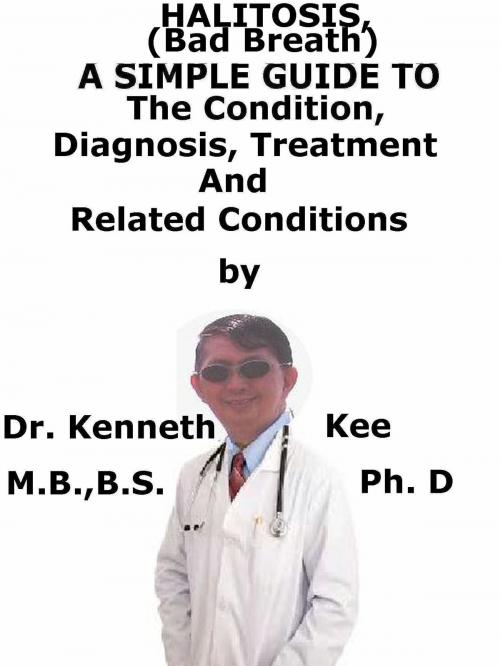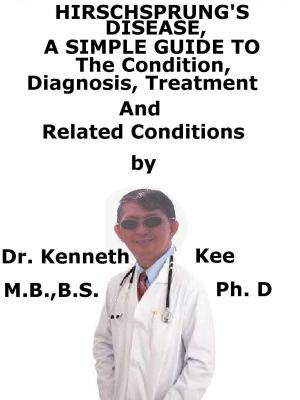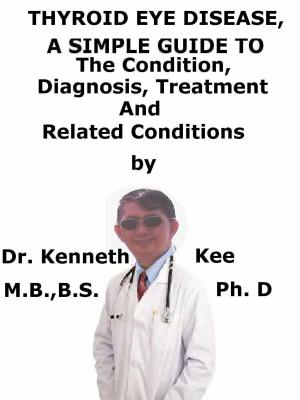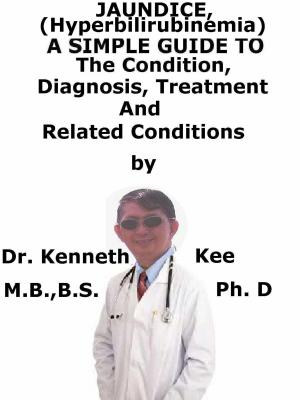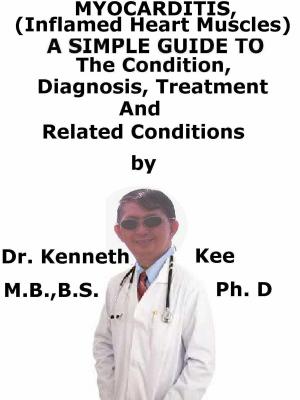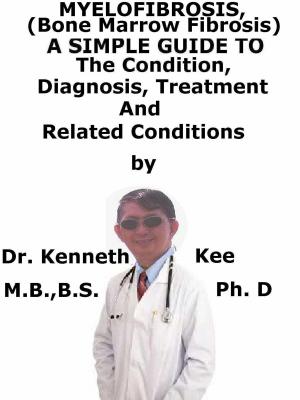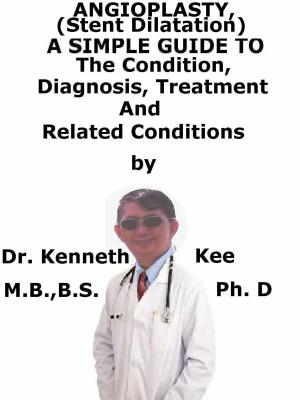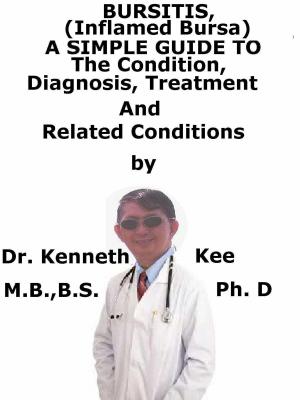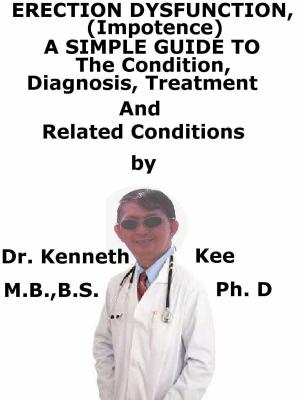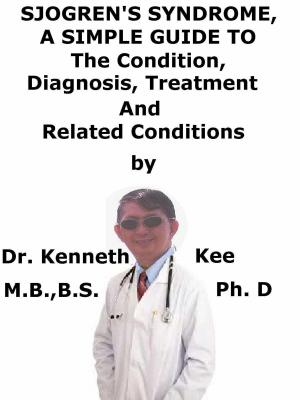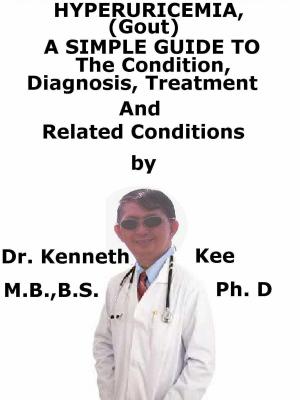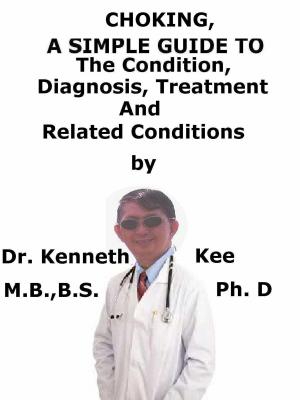Halitosis (Bad Breath), A Simple Guide To The Condition, Diagnosis, Treatment And Related Conditions
Nonfiction, Health & Well Being, Medical, Dentistry, Dental Hygiene, Health, Ailments & Diseases, Oral Health| Author: | Kenneth Kee | ISBN: | 9781370060955 |
| Publisher: | Kenneth Kee | Publication: | December 16, 2016 |
| Imprint: | Smashwords Edition | Language: | English |
| Author: | Kenneth Kee |
| ISBN: | 9781370060955 |
| Publisher: | Kenneth Kee |
| Publication: | December 16, 2016 |
| Imprint: | Smashwords Edition |
| Language: | English |
Halitosis (Bad Breath) is the medical disorder when a person suffers from chronic bad breath.
Halitosis (Bad Breath) indicates that the patient has an unpleasant odor in the breath that other people observe when the patient talks or exhales.
A major problem with halitosis is that often the only person not to observe it is the person affected.
The patient may be used to his or her own smell and does not be likely to notice the bad breath.
Often, the only method to know about it is if a person remarks on it.
The patient may have to depend on a family member or a close friend to be truthful and inform the patient if the patient has bad breath.
A dentist will generally be capable to tell if the patient has bad breath.
Bad breath may be caused by:
A. Coming from within the mouth
Most cases of bad breath (halitosis) come from germs (bacteria) or rubbish that collects within the mouth.
As the bacteria break down proteins and other debris in the mouth, they let go foul-smelling gases.
1. Bacterial infection of the gums, dental cavities. (600 types of bacteria present in mouth)
2. Anaerobic infections of the mouth,
3. Infection of the tonsils, nose and sinuses (postnasal drip)
Gastric problems and indigestion:
1. Gastroesophageal reflux disease (GERD)
2. Gastrojejunocolic fistula
Food and Medical causes
1. Garlic and onions which has odious sulfur compounds can give rise to foul smell from the mouth
2. Fish
3. Cheese
4. Alcohol
Smoking
Dry mouth:
Gum disease
Diagnosis can normally be made by:
1. History of bad breath
2. Lick the back of the wrist, let the saliva dry for a minute, and smell the dried saliva.
3. Scrape the posterior back of the tongue with a plastic disposable spoon and smell the drying residue.
4. Halimeter: a portable sulfide monitor to assess for levels of sulfur emissions (particularly hydrogen sulfide) from the mouth.
5. BANA test: find the salivary levels of an enzyme which indicates the presence of certain halitosis-related bacteria
6. ß-galactosidase test: the presence of this enzyme in the saliva indicates presence of bad breath
A throat culture may be done if the patient has a sore throat or mouth sores.
Treatment:
Good dental hygiene, particularly flossing is essential.
Mouthwashes are not very useful in treating the underlying disorder.
Even fresh parsley or strong mint is often a better and efficient way to fight temporary bad breath.
Smoking should be avoided.
Antibiotics may be given for some disorders.
TABLE OF CONTENT
Introduction
Chapter 1 Halitosis (Bad Breath)
Chapter 2 Causes
Chapter 3 Symptoms
Chapter 4 Diagnosis
Chapter 5 Treatment
Chapter 6 Prognosis
Chapter 7 Dental Decay
Chapter 8 GERD
Epilogue
Halitosis (Bad Breath) is the medical disorder when a person suffers from chronic bad breath.
Halitosis (Bad Breath) indicates that the patient has an unpleasant odor in the breath that other people observe when the patient talks or exhales.
A major problem with halitosis is that often the only person not to observe it is the person affected.
The patient may be used to his or her own smell and does not be likely to notice the bad breath.
Often, the only method to know about it is if a person remarks on it.
The patient may have to depend on a family member or a close friend to be truthful and inform the patient if the patient has bad breath.
A dentist will generally be capable to tell if the patient has bad breath.
Bad breath may be caused by:
A. Coming from within the mouth
Most cases of bad breath (halitosis) come from germs (bacteria) or rubbish that collects within the mouth.
As the bacteria break down proteins and other debris in the mouth, they let go foul-smelling gases.
1. Bacterial infection of the gums, dental cavities. (600 types of bacteria present in mouth)
2. Anaerobic infections of the mouth,
3. Infection of the tonsils, nose and sinuses (postnasal drip)
Gastric problems and indigestion:
1. Gastroesophageal reflux disease (GERD)
2. Gastrojejunocolic fistula
Food and Medical causes
1. Garlic and onions which has odious sulfur compounds can give rise to foul smell from the mouth
2. Fish
3. Cheese
4. Alcohol
Smoking
Dry mouth:
Gum disease
Diagnosis can normally be made by:
1. History of bad breath
2. Lick the back of the wrist, let the saliva dry for a minute, and smell the dried saliva.
3. Scrape the posterior back of the tongue with a plastic disposable spoon and smell the drying residue.
4. Halimeter: a portable sulfide monitor to assess for levels of sulfur emissions (particularly hydrogen sulfide) from the mouth.
5. BANA test: find the salivary levels of an enzyme which indicates the presence of certain halitosis-related bacteria
6. ß-galactosidase test: the presence of this enzyme in the saliva indicates presence of bad breath
A throat culture may be done if the patient has a sore throat or mouth sores.
Treatment:
Good dental hygiene, particularly flossing is essential.
Mouthwashes are not very useful in treating the underlying disorder.
Even fresh parsley or strong mint is often a better and efficient way to fight temporary bad breath.
Smoking should be avoided.
Antibiotics may be given for some disorders.
TABLE OF CONTENT
Introduction
Chapter 1 Halitosis (Bad Breath)
Chapter 2 Causes
Chapter 3 Symptoms
Chapter 4 Diagnosis
Chapter 5 Treatment
Chapter 6 Prognosis
Chapter 7 Dental Decay
Chapter 8 GERD
Epilogue
